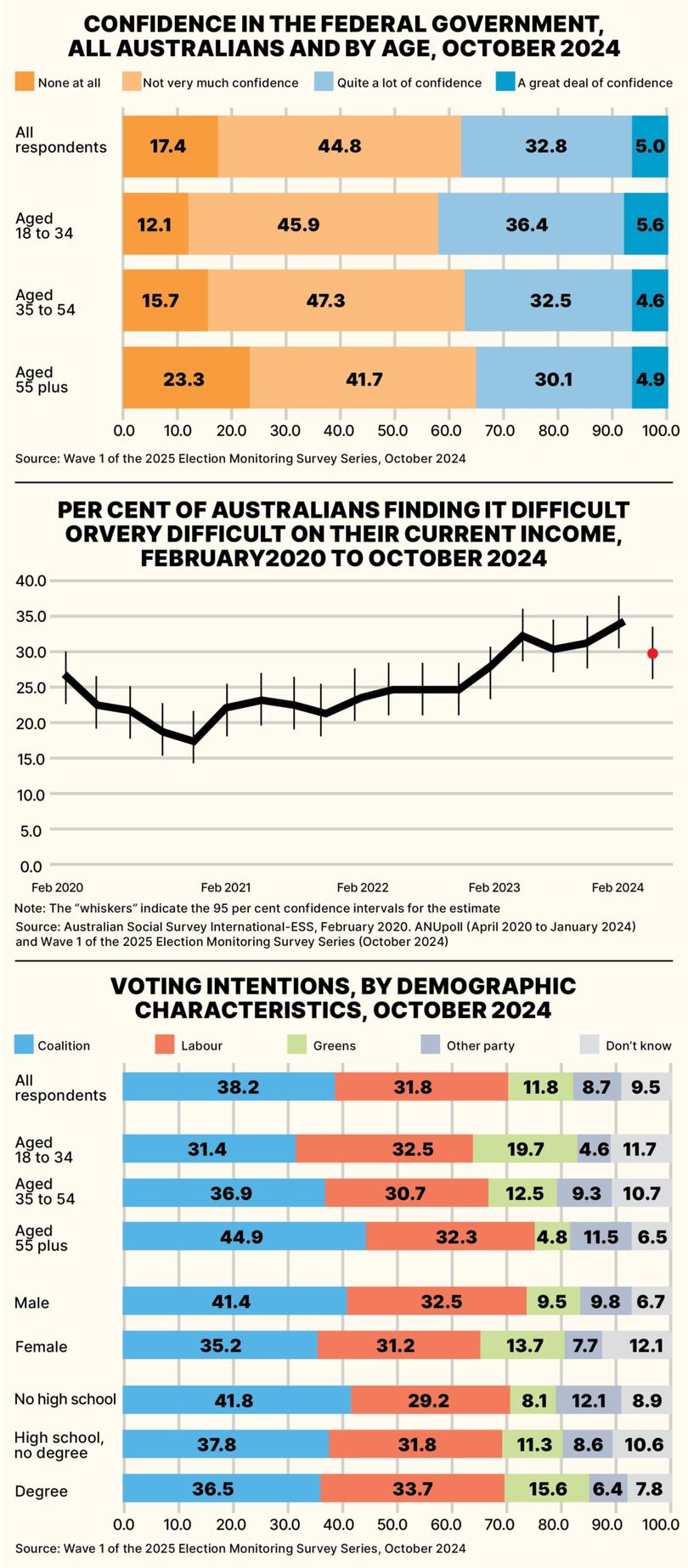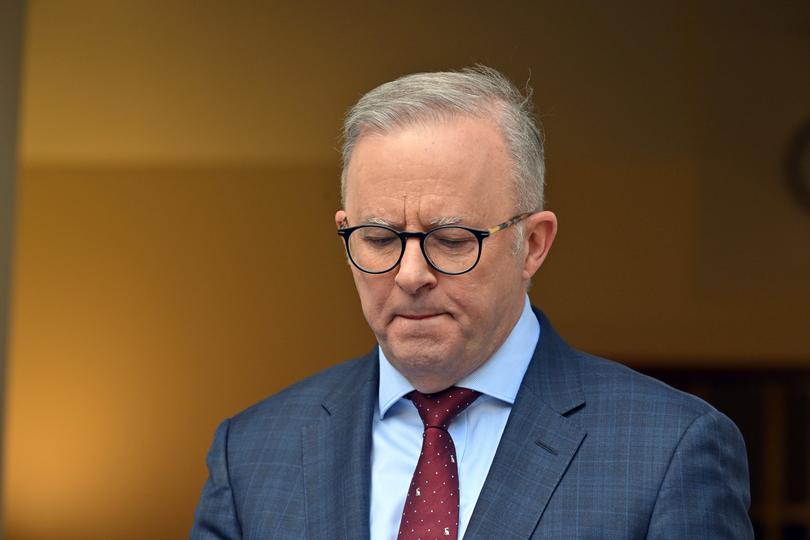ANU report on voter satisfaction reveals ‘troubling’ results for Albanese Government

Public confidence in the Federal Government and direction of the country is at similar levels to the months before Scott Morrison was ousted from power in May 2022, reveals a new voter survey by the Australian National University.
In what will be alarming reading for the Prime Minister, the study on perceptions of democracy and political attitudes, due out on Wednesday, shows a steady decline in faith in the nation’s leaders from just under 55 per cent confidence in 2022 to lower than 40 per cent today.
Public trust in the Government is currently on a par with the Morrison administration as it emerged from the torrid lockdowns of the COVID-19 pandemic and rock-bottom public approval during the catastrophic Black Summer bushfires of January 2020.
Sign up to The Nightly's newsletters.
Get the first look at the digital newspaper, curated daily stories and breaking headlines delivered to your inbox.
By continuing you agree to our Terms and Privacy Policy.Report author and head of the ANU’s School of Politics and International Relations Nicholas Biddle said the similarity in data compared to just prior to the previous election was one of the surprise findings of the nationally representative sample of more than 3500 Australians.
Such negative views were “particularly troubling” for a government that had initially enjoyed positive public feedback, and at a time when inflation was mostly under control without a substantial increase in unemployment, he said.
“It’s not to say that there’s any guarantee that there will be a change of government, or even that it’s more likely than not, but it’s hard to see what the government is going to be able to do to turn around the views and narrative,” he told The Nightly.
Professor Biddle attributed the Government’s dip in popularity to two main issues, the first being the failed Voice to Parliament referendum in 2023 – one of the Prime Minister’s most ambitious initiatives.
The loss of support had not lain so much in the question of more recognition for Aboriginal and Torres Strait Islander Australians in the Constitution, but in the Government’s management of the campaign, he said.
Secondly, the lingering effect of inflation on the cost-of-living continued to have a negative impact on public perceptions.
“Even if price rises have stopped, people still recognise that prices are higher than they were previously,” said Professor Biddle.
“People do see that, and it flows through to their views towards government. Any government which has presided over a longish period of time of inflation is going to find it very hard to recalibrate.”
In better news for the Government — the election, which must be held by May, is still too close to call, and all major parties will be joining them in an uphill struggle to win favour with the public.
Taking all Australians combined, the Coalition has a substantial lead on the primary vote, with 38.2 per cent support if the election was held on the day of the survey in October, compared to a 31.8 per cent backing for Labor.

However, the report shows the Greens have a primary vote share of 11.9 per cent which, given the vast majority of preferences for Greens voters flows to Labor, suggests a slight preference for the two main left of centre parties over the two main right of centre parties.
Age, sex, and education are all strongly predictive of voting intentions, with older, male and less educated voters more likely to choose the Coalition and younger Australians four more times as likely to say they would vote for the Greens than older citizens.
All political parties may do well to appeal to female voters, 12.1 per cent of whom remain undecided on how to vote.
“Given the requirements around compulsory voting in Australia, who these individuals end up voting for may end up having a large impact on the 2025 Federal Election outcome,” researchers conclude.
During the 2022 poll, Independents and Greens made the case to floating female voters who were unconvinced by the major parties, Professor Biddle said.
“A lot of the uncertainty around the election outcome will be decided by how this block of female voters’ views change over the next six months,” he said.
One silver lining of the report card on political attitudes is that Australia still seems to be in a healthier position than much of the western world where cynicism towards democracy is on the rise.
Unlike countries where populist parties or leaders have had election victories, 64 per cent of the Australian population remains reasonably satisfied with the direction of the country and with democracy itself.
But some ominous clouds are appearing on the horizon, particularly in the variation of political views based on education.
Only 60.1 per cent of those who have not completed Year 12 are satisfied or very satisfied with democracy, presenting a large gulf with 69.2 per cent of university graduates.
This educational difference when it came to satisfaction in democracy and views towards the elites was “problematic” as it signalled a section of the population had consistently negative views towards the Government and institutions, Professor Biddle said.
While it had not yet translated into support for anti-establishment or extremist parties, there was “no guarantee that that will continue,” he cautioned.
The survey also sends a warning to leaders that financial stress and loneliness, which has risen among Australia’s youth, are strongly associated with negative political attitudes.
The gender and education gaps among electorate reflect similar voting trends in the United States.
The findings also reveal Australia is starting to follow in US footsteps when it comes to the weakening of class differences as a predictor of voting intentions.
The US phenomenon of “double haters”, where people held negative views towards presidential candidates from both main political parties, is now starting to manifest itself in Australia.

The report estimates that 14.4 per cent of voters rate both PM Anthony Albanese and Opposition Leader Peter Dutton somewhere between 0 and 4 on the likeability scale.
“Quadruple haters”, who dislike all four of the party leaders, account for 7.3 per cent.
On a more optimistic note, Professor Biddle said the concept was not as entrenched as in the US and that Australians were less politically divided than their American peers.
“That kind of polarisation, where people are unwilling to consider the other side of politics, that hasn’t emerged. We don’t see it in our data,” he said.

